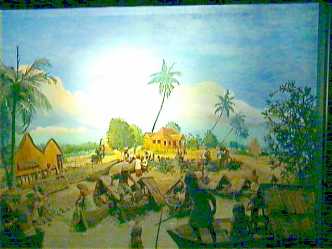|
|
 |
History | Our Origin
|
|
 Early written accounts of Singapore had various kinds of names
by different people. During the third century, a Chinese referenced
Singapore with the name of "Pu-Luo-Chung", which simply meant 'the island at the
end of a Peninsular'. In the year 1320, the Mongol court sent someone to
a place called Long Yamen, which could be literally translated as Dragon’s
Tooth Strait, to get elephants. The place then was probably the present day
Keppel Harbour. In the year 1330, a Chinese visitor by the name of Wang Dayuan
referred the main settlement as Pancur, which meant ‘Spring’. He also added
that at that time, there was already Chinese living there. One of the earliest
names of Singapore used in the year 1365 was Temasek, or ‘sea port’. It was
found in the Javanese Nagarakretagama’. At a certain Vietnamese source that was
found, the same name was also used.
Early written accounts of Singapore had various kinds of names
by different people. During the third century, a Chinese referenced
Singapore with the name of "Pu-Luo-Chung", which simply meant 'the island at the
end of a Peninsular'. In the year 1320, the Mongol court sent someone to
a place called Long Yamen, which could be literally translated as Dragon’s
Tooth Strait, to get elephants. The place then was probably the present day
Keppel Harbour. In the year 1330, a Chinese visitor by the name of Wang Dayuan
referred the main settlement as Pancur, which meant ‘Spring’. He also added
that at that time, there was already Chinese living there. One of the earliest
names of Singapore used in the year 1365 was Temasek, or ‘sea port’. It was
found in the Javanese Nagarakretagama’. At a certain Vietnamese source that was
found, the same name was also used.
The name of Singapura comes from a Malay legend. The island
had its name from a Sumatran Prince who visited the island in
the 14th century. When he reaches the island, he saw a
fearsome creature, which is actually a lion. Thinking that
this was a good omen, the prince founded a new city on the
spot and changed the name from Temasek to Singapura. In
Sanskrit, "singa" means lion and "pura"
means city. Thus the Lion City was born. The symbol of
merlion - a mythical creature with the head of a lion and the
body of a fish - reminds Singaporean's of the early
connections to this legend and the seas.
Proceed on with the journey
|
|
|
|
|